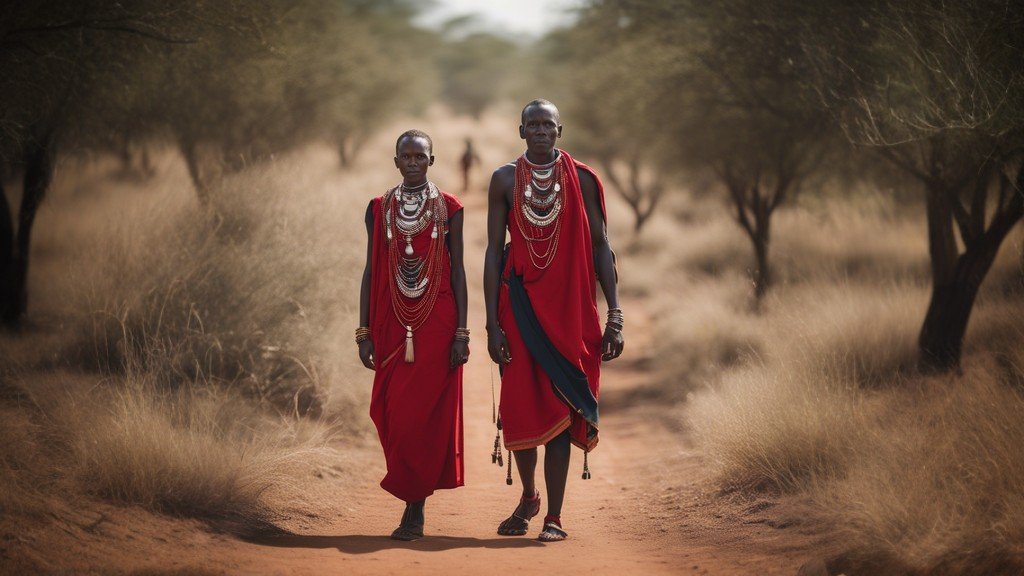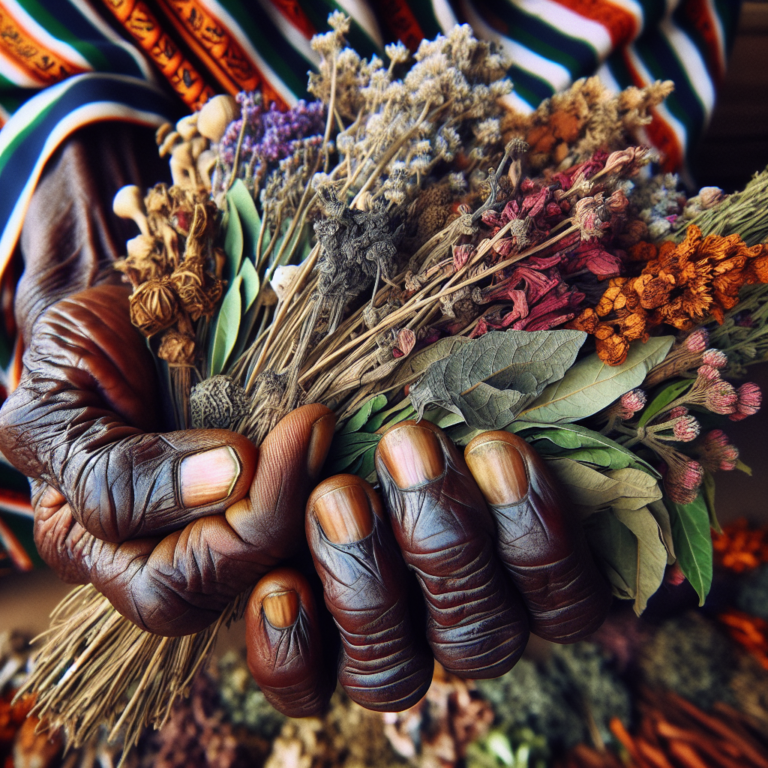What Is The National Dress Of Kenya?
So you’re curious about the national dress of Kenya? Well, you’ve come to the right place! Kenya, a country known for its rich cultural heritage and diverse ethnic groups, boasts a mesmerizing array of traditional attire. From the vibrant kanga and kikoi to the graceful maasai shuka, each clothing piece tells a unique story of the Kenyan people and their traditions. Join us on a colorful journey as we uncover the beauty and significance of Kenya’s national dress.
Traditional Clothing of Kenya
Introduction
Kenya, a vibrant and diverse country in East Africa, is known for its rich cultural heritage and traditional clothing. The traditional attire of Kenya reflects the country’s diverse ethnic groups, each with its distinct style and symbolism. The clothing not only represents the cultural identity of various tribes but also holds great importance in Kenyan society. With a wide variety of traditional garments, Kenya proudly showcases its unique heritage through its clothing.
Importance of Traditional Clothing
Traditional clothing in Kenya holds immense cultural significance. It serves as a powerful symbol of identity, reflecting the history, traditions, and beliefs of each tribe. Wearing traditional attire is not only a means of expressing pride in one’s heritage but also a way of preserving and honoring the customs passed down through generations. Traditional clothing plays a vital role in ceremonial events, such as weddings and festivals, where it showcases the beauty and diversity of Kenyan culture.
Variety in Traditional Clothing
Kenya’s traditional clothing exhibits a remarkable variety, owing to the country’s numerous tribes and ethnicities. Each tribe has its unique styles, materials, and decorative elements, making Kenya a treasure trove of cultural diversity. Some of the prominent tribes with distinctive traditional clothing include the Maasai, Kikuyu, Luo, Turkana, Samburu, Swahili, Giriama, and Luhya.
Maasai Clothing
Maasai Tribe Overview
The Maasai tribe is one of the most recognizable tribes in Kenya, renowned for their vibrant traditional clothing and distinctive culture. Their clothing represents their nomadic lifestyle, warrior traditions, and close bond with nature. The Maasai people predominantly reside in southern Kenya and northern Tanzania.
Maasai Traditional Clothing for Men
Maasai men traditionally wear a bright red, loose-fitting robe called a “shuka.” The shuka is often draped over one shoulder, and its vivid color symbolizes bravery and the Maasai warrior spirit. Additionally, they wear beaded belts, sandals made from cowhide, and sometimes even headpieces adorned with ostrich feathers.
Maasai Traditional Clothing for Women
Maasai women wear long dresses called “kanga” or “kesi.” These dresses feature intricate beadwork and colorful patterns, representing cultural symbols and stories. Women also wear intricately beaded necklaces, bracelets, and earrings, which serve as a symbol of status and beauty within the tribe.
Colors and Patterns
Colors play a significant role in Maasai traditional clothing. The predominant color is red, symbolizing bravery, strength, and the blood of their cattle, which holds immense cultural importance. Other colors like blue, green, and black are also incorporated, often complemented by intricate patterns and beadwork.
Kikuyu Clothing
Kikuyu Tribe Overview
The Kikuyu tribe is Kenya’s largest ethnic group, residing primarily in the central highlands of the country. Their traditional clothing represents their agricultural heritage and spiritual beliefs. The Kikuyu people are known for their industriousness and a strong sense of community.
Kikuyu Traditional Clothing for Men
Kikuyu men traditionally wear a woven cloth known as “rara.” It is a rectangular piece of fabric wrapped around the body and secured with a belt. Rara is often adorned with intricate geometric patterns and is predominantly made from cotton. Men also wear traditional accessories such as walking sticks and hats made from fibers or animal hides.
Kikuyu Traditional Clothing for Women
Kikuyu women typically wear a two-piece outfit consisting of a blouse called “ruhia” and a wrap-around skirt known as “nguoi” or “kitharitu.” The blouse is often brightly colored and embellished with embroidery or beadwork. The skirt is usually made from colorful fabric and fastened around the waist with a belt.
Unique Features
One distinctive feature of Kikuyu traditional clothing is the use of banana fiber in the production of accessories and decorative elements. Banana fiber is used to make elaborate headdresses, belts, and other accessories, showcasing the resourcefulness of the Kikuyu people.
Luo Clothing
Luo Tribe Overview
The Luo tribe resides in western Kenya, primarily around Lake Victoria, and is known for its rich artistic traditions. Their vibrant traditional clothing reflects the tribe’s love for music, dance, and storytelling. The Luo people have a deep connection to their ancestral lands and the bounty of the lake.
Luo Traditional Clothing for Men
Luo men traditionally wear a flowing white robe called “dholuo.” The dholuo is made from cotton or linen and is worn over an undershirt and trousers. It represents purity and is often adorned with colorful embroidery or patterns woven into the fabric. Luo men also wear hats, scarves, and sandals made from locally available materials.
Luo Traditional Clothing for Women
Luo women wear a combination of a blouse called “nyombo” and a wrap-around skirt known as “dhlidhiambo” or “leshawo.” The blouses are usually brightly colored and feature intricate embroidery or appliqué work. The skirts are made from vibrant fabrics and fastened around the waist with a belt or string.
Symbolism in Clothing
The Luo tribe incorporates deep symbolism into their traditional clothing. Many patterns and embroidery motifs depict animals, plants, or natural elements, representing various aspects of Luo culture and mythology. The clothing also reflects the social status and age group of the wearer, serving as a visual language within the tribe.
Turkana Clothing
Turkana Tribe Overview
The Turkana tribe, residing in the arid northern regions of Kenya, is known for its resilience and adaptability in harsh environments. Their traditional clothing reflects the need for protection from the scorching sun, strong winds, and extreme temperature variations.
Turkana Traditional Clothing for Men
Turkana men traditionally wear a “shuka” made from animal skins or cotton fabric. The shuka serves as both a cloak and a wrap-around skirt. It provides protection from the sun during the day and warmth during chilly desert nights. Men also wear animal hide sandals and accessorize with beaded necklaces and bracelets.
Turkana Traditional Clothing for Women
Turkana women wear a similar style of shuka, but with additional layers for modesty. They often adorn themselves with beaded headbands, necklaces, and earrings. Women also wear leather skirts and aprons decorated with intricate beadwork, symbolizing their roles as caregivers and providers within the community.
Adaptation to Climate
Turkana traditional clothing is specifically designed to withstand the harsh climate of the region. The loose-fitting garments allow air circulation and provide protection against the scorching sun. The use of fabrics and materials naturally found in the environment highlights the resourcefulness and adaptability of the Turkana people.
Samburu Clothing
Samburu Tribe Overview
The Samburu tribe, closely related to the Maasai, is known for their semi-nomadic lifestyle and beautiful traditional clothing. Residing in the arid lands of northern Kenya, the Samburu people have developed clothing that reflects both practicality and aesthetic appeal.
Samburu Traditional Clothing for Men
Samburu men traditionally wear a bright red cloth similar to the Maasai shuka, called “leso.” The leso is wrapped around the body and secured with a belt, providing protection from the sun and aiding in heat dissipation. Men also wear beaded necklaces, bracelets, and anklets, symbolizing their status within the community.
Samburu Traditional Clothing for Women
Samburu women wear long, pleated dresses known as “lessa” or “dira.” The dresses are adorned with intricate beadwork, creating stunning patterns and designs. Women also wear beaded jewelry, such as necklaces and earrings, which are meticulously handcrafted by the women of the tribe.
Accessories and Beadwork
Beadwork is a prominent feature of Samburu traditional clothing, with intricate patterns adorning both men’s and women’s garments. The beadwork serves not only as a decorative element but also carries symbolic meaning, representing the beauty, strength, and wealth of the Samburu people.
Swahili Clothing
Swahili Culture Overview
The Swahili culture of Kenya is a unique blend of African, Arab, and Indian influences, resulting from centuries of trade and cultural exchange along the East African coast. The Swahili people are known for their rich history, diverse languages, and vibrant traditional clothing.
Swahili Traditional Clothing for Men
Swahili men traditionally wear a “kanzu,” a long, flowing robe made from white or light-colored fabric. The kanzu has a loose fit, allowing for comfort in the tropical climate. Men often pair the kanzu with a “kofia,” a traditional cap made from embroidered fabric or crocheted with fine threads.
Swahili Traditional Clothing for Women
Swahili women wear a “bui bui,” a loose-fitting black robe that covers the entire body. The bui bui is often paired with a colorful headscarf or hijab. The clothing style of Swahili women also includes vibrant dresses and skirts, often made from colorful fabrics and adorned with intricate embroidery or beading.
Influences from Arab and Indian Cultures
Swahili traditional clothing showcases the fusion of African, Arab, and Indian influences. The loose, flowing garments are reminiscent of Arab and Indian attire, adapted to the tropical climate. The intricate embroidery and beadwork reflect the rich artistic traditions of the region.
Giriama Clothing
Giriama Tribe Overview
The Giriama tribe is one of the nine ethnic groups that make up the Mijikenda people, residing in the coastal regions of Kenya. The Giriama are known for their agricultural lifestyle and their vibrant traditional clothing, which stands out for its decorative embellishments.
Giriama Traditional Clothing for Men
Giriama men traditionally wear a “kikoi,” a brightly colored cloth wrapped around the waist like a skirt. The kikoi often features vibrant patterns and designs. Men also wear shirts made from woven fibers and accessorize with beaded jewelry, such as necklaces and bracelets.
Giriama Traditional Clothing for Women
Giriama women wear a two-piece outfit consisting of a blouse called “kanga” and a wrap-around skirt called “bikini.” The blouse is often adorned with intricate beadwork and embroidery, showcasing the artistic skills of Giriama women. The skirt is made from vibrant fabric and fastened around the waist with a belt.
Decorative Embellishments
The Giriama traditional clothing stands out for its elaborate decorative embellishments. Intricate beadwork, embroidery, and appliqué techniques are used to create stunning designs on both men’s and women’s garments. These decorative elements not only enhance the beauty of the clothing but also carry cultural significance within the Giriama tribe.
Luhya Clothing
Luhya Tribe Overview
The Luhya tribe is one of Kenya’s largest ethnic groups, residing primarily in the western regions of the country. The Luhya people have a rich cultural heritage, and their traditional clothing showcases their intricate weaving techniques and artistic traditions.
Luhya Traditional Clothing for Men
Luhya men traditionally wear a “denda,” a woven shirt made from bark fiber. The denda features intricate patterns and designs, created using traditional weaving techniques passed down through generations. Men also wear a “debesha,” a rectangular cloth wrapped around the waist as a skirt.
Luhya Traditional Clothing for Women
Luhya women wear a “tsikhambi,” a brightly colored dress made from woven or embroidered fabric. The tsikhambi often has intricate patterns and designs, representing the artistic skills of Luhya women. Women also wear accessories like headbands, necklaces, and bracelets made from beads and other materials.
Intricate Weaving Techniques
Luhya traditional clothing is renowned for its intricate weaving techniques. The bark fiber used in the production of shirts and skirts is carefully woven to create stunning patterns and designs. The weaving techniques passed down through generations highlight the artistry and craftsmanship of the Luhya people.
Challenges to Preserving Traditional Clothing
Urbanization and Western Influence
As Kenya continues to urbanize and modernize, the influence of Western clothing and fashion trends poses a challenge to the preservation of traditional clothing. Many young Kenyans are opting for Western-style clothing, which is perceived as more modern and fashionable. This shift in preference threatens the cultural significance and continued practice of traditional clothing.
Industrialization and Modernization
The advent of industrialization has also impacted the production and availability of traditional clothing. With the rise of mass-produced textiles and clothing, the demand for handcrafted traditional garments has decreased. The traditional methods of weaving, dyeing, and embroidery are being replaced by more efficient, mechanized processes, resulting in a decline in the production of authentic traditional clothing.
Globalization and Commercialization
The increasing influence of globalization and the commercialization of Kenyan culture pose a significant challenge to the preservation of traditional clothing. As Western brands and global fashion trends dominate the market, traditional clothing often takes a backseat. The commodification of cultural attire sometimes results in a loss of authenticity and dilution of cultural significance, as it becomes more focused on profit rather than cultural preservation.
In conclusion, the traditional clothing of Kenya is a testament to the country’s rich cultural heritage and diversity. From the vibrant Maasai attire to the intricate weaving techniques of the Luhya tribe, each ethnic group contributes to the unique tapestry of Kenyan traditional clothing. Despite the challenges posed by urbanization, industrialization, and globalization, it is essential to recognize and preserve the cultural importance of traditional clothing in Kenya, not only for the current generation but also for generations to come.






